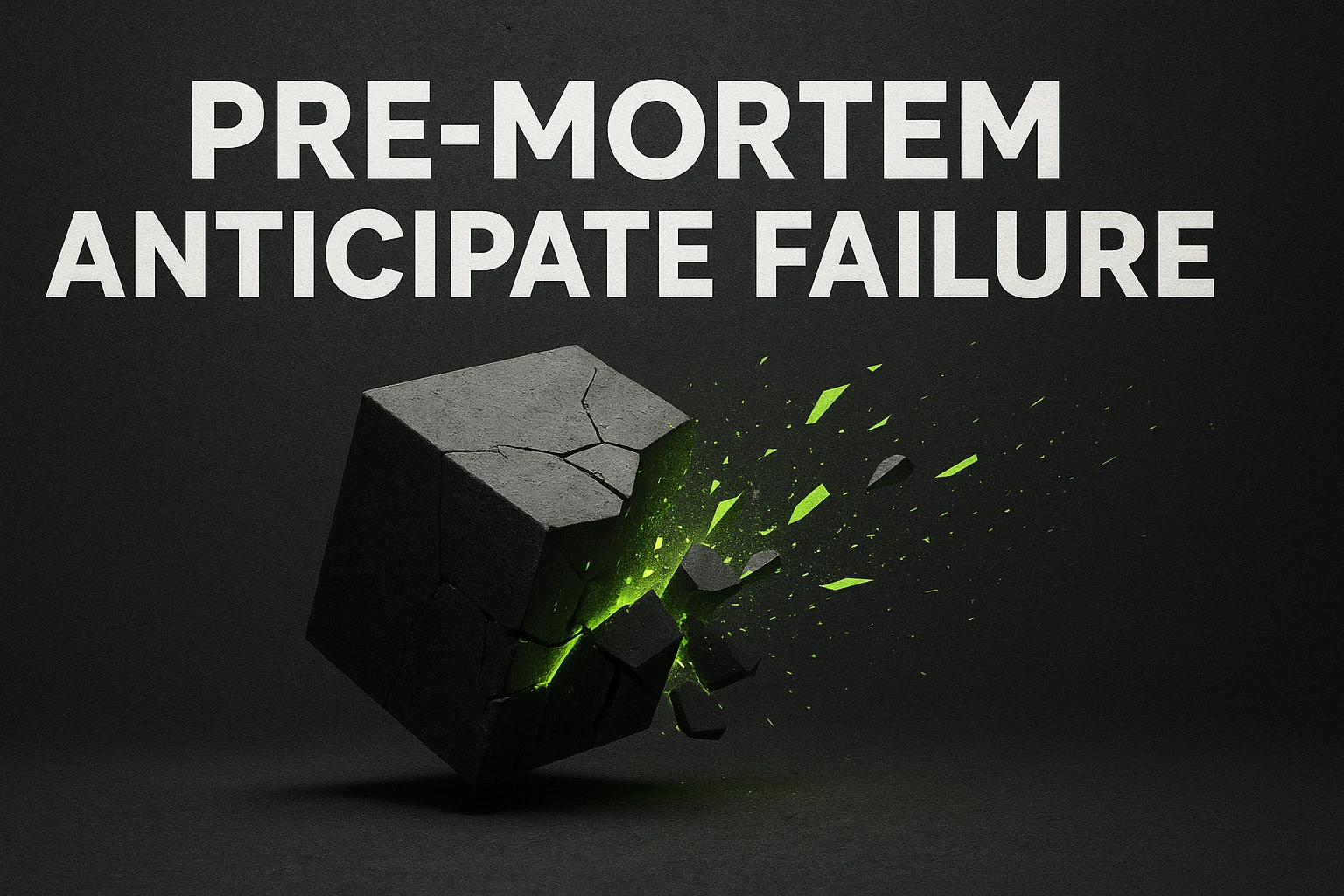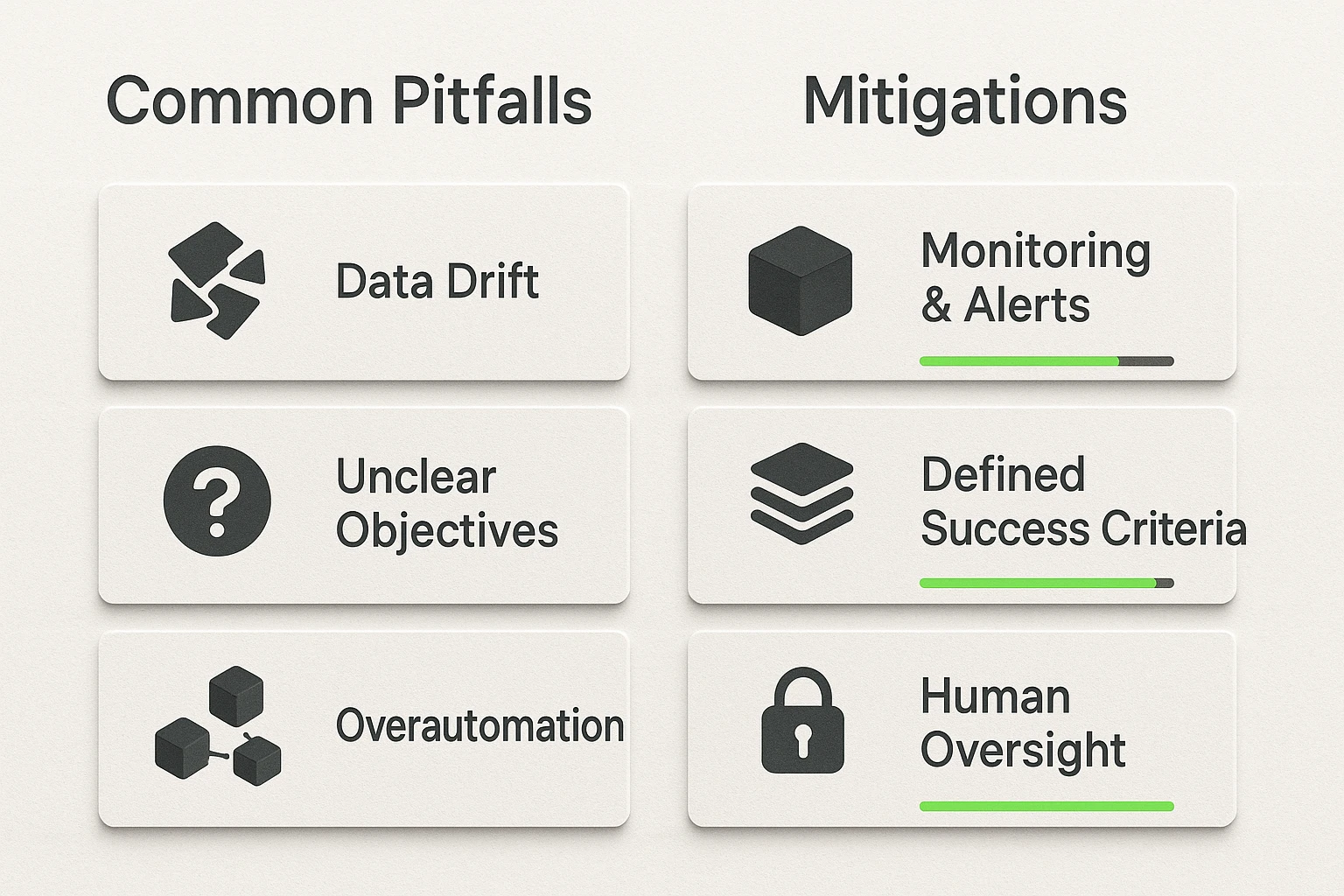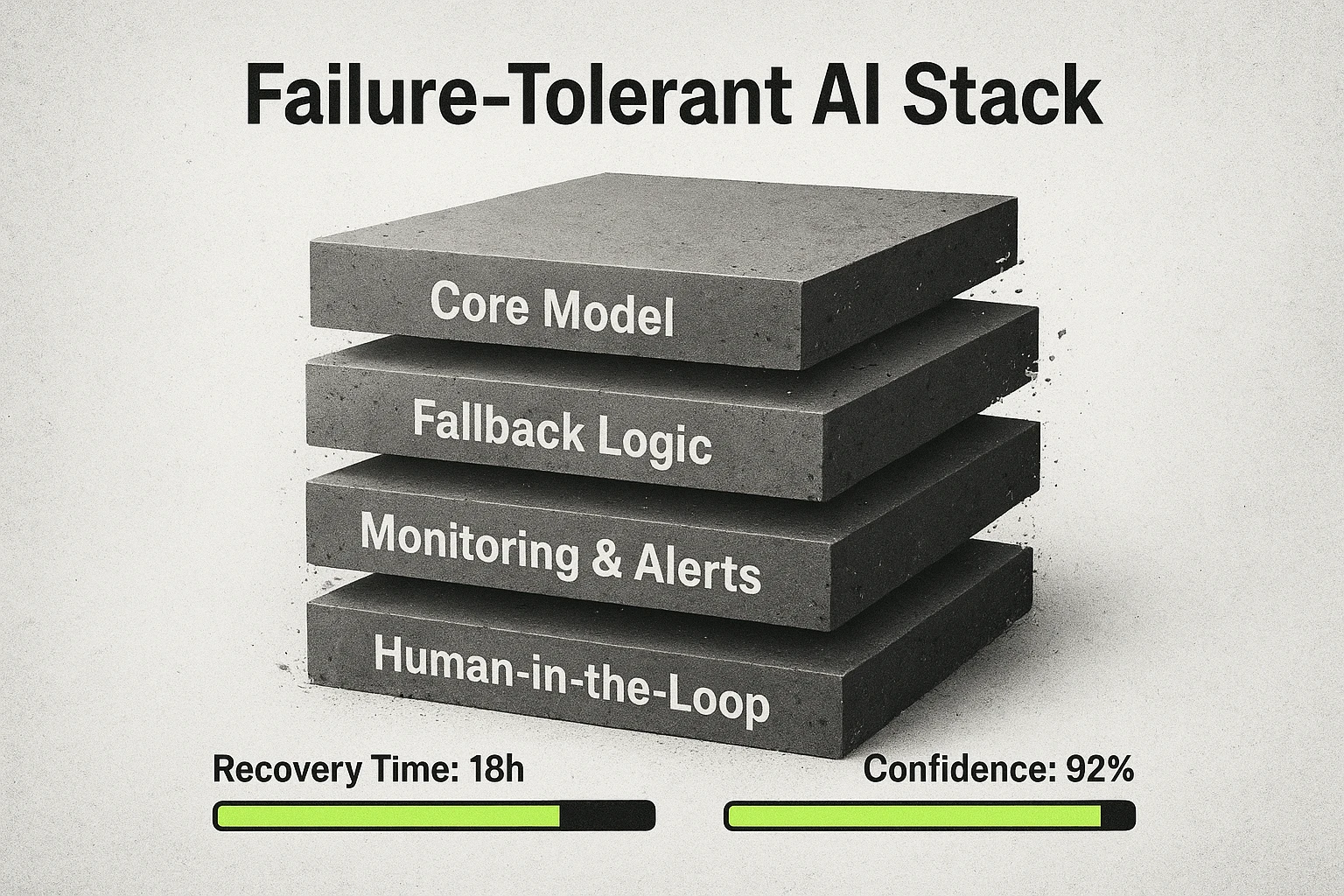The AI Pre-Mortem: Why Your SME Needs to Plan for Failure to Succeed
AI Summary

You're considering an AI transformation for your business. You've seen the case studies and heard the promises of exponential growth. Yet, a nagging question remains: what if it doesn't work? It's a valid concern. Research from Gartner reveals a sobering reality. An estimated 85% of AI projects fail to deliver on their intended promises, and half never even make it out of the pilot phase.
The typical response is relentless optimism. Push forward, hope for the best, and fix problems as they arise. But what if the most successful companies do the exact opposite? What if the secret to unassailable AI success lies in systematically anticipating failure before you even begin?
This is the principle behind the AI pre-mortem. It's a contrarian but powerful strategy that flips the script on implementation. Instead of asking "What do we need to do to succeed?", you ask, "Imagine this project has completely failed. What went wrong?"
The Silent Killers of SME AI Projects
AI failures are rarely a single, catastrophic event. They are often a slow burn, fueled by overlooked assumptions and foundational cracks that quietly drain your budget and enthusiasm. Decades of project data point to a few common culprits. An IBM study found that the top reasons for failure cluster around three critical areas: a lack of clear strategy, a shortage of relevant talent, and fundamental issues with data.
These aren't just issues for large enterprises. For small and medium-sized businesses, they represent critical points of vulnerability that can derail an otherwise promising initiative.
Pitfall 1: The Strategy Gap (42% of Failures)
This is the most common pitfall. It happens when AI is treated as a magic wand instead of a specific tool for a specific problem. An SME might want to "use AI for marketing" without defining what that means. Does it mean automating lead qualification, personalizing email campaigns, or predicting customer churn? Without a precise target, the project has no direction. Without a solid product ideation framework, AI initiatives become expensive experiments with no clear definition of success.
Pitfall 2: The Talent Mismatch (42% of Failures)
Many SMEs believe they can't afford AI because they don't have a team of in-house data scientists. This is a misunderstanding of the talent required. The real challenge isn't finding PhDs in machine learning. It's finding a partner who can translate your business objectives into a functional, automated system. The crucial skill is not just technical expertise, but the ability to bridge the gap between your business needs and the AI's capabilities.
Pitfall 3: The Data Dilemma (36% of Failures)
The "garbage in, garbage out" principle is amplified with AI. For SMEs, the problem is rarely a lack of data. It's that the data is often messy, inconsistent, or siloed across different platforms like your CRM, accounting software, and email marketing tool. An AI system can't generate reliable insights from unreliable information. A pre-mortem forces you to honestly assess the quality and accessibility of your data before a single line of code is written.

Building Resilience: From Risk Mitigation to ROI
Conducting a pre-mortem isn't about dwelling on the negative. It's a strategic exercise in building resilience, and the business case is compelling. According to Deloitte, companies that proactively manage AI risks are twice as likely to achieve their ROI goals. This is because they've already identified and planned for the most likely points of failure.
This proactive approach has a direct impact on the bottom line. Research from Accenture shows that building resilient AI systems, designed from the ground up to handle errors and exceptions, can reduce failure-related costs by up to 60%. You spend less time and money on reactive fixes and more time benefiting from a system that works as intended.
Designing a Failure-Tolerant AI Architecture
A pre-mortem naturally leads to a smarter system design. Instead of building a fragile, all-or-nothing system, you create a failure-tolerant architecture. This means your business operations don't grind to a halt if one component of your AI system encounters an issue.
This architecture includes several layers of protection:
- Fallback Logic: What happens if the AI can't confidently provide an answer? A resilient system has a default. For example, if an AI chatbot can't resolve a customer query, it automatically transfers the chat to a human agent instead of creating a frustrating dead end.
- Continuous Monitoring: The system should have built-in checks to monitor its own performance and data quality. It should alert you to anomalies, like a sudden drop in lead quality or a broken data feed, before they become major problems.
- Human Oversight: The goal of automation is efficiency, not abdication of responsibility. A well-designed system includes a "human-in-the-loop" at critical decision points, allowing your team to review, approve, or correct the AI's actions.
By defining metrics like Recovery Time Objective (how quickly must the system recover?) and Confidence Thresholds (at what point does a human need to intervene?) upfront, you build an asset that supports your team, not a black box that creates uncertainty. For many businesses, this strategic planning marks the AI point of no return, where thoughtful implementation secures a lasting competitive advantage.

Frequently Asked Questions
Isn't this pre-mortem process too complex and slow for a small business?
Not at all. The key is to focus on the most significant and likely risks, not every possible edge case. A skilled implementation partner guides you through a streamlined process focused on your specific business goals.
We don't have a data science team. Can we still do this?
Absolutely. The pre-mortem is primarily a business logic exercise, not a technical one. It's about asking "what if our customer data is incomplete?" or "what if a lead is miscategorized?". You need a transformation partner who understands business first and can translate your answers into a robust technical solution.
Your First Step Towards an Unassailable AI Strategy
In the rush to adopt AI, many businesses skip the most crucial step. They plan for success but fail to prepare for reality. By embracing the pre-mortem, you invert the process. You build a foundation of resilience that makes success not just possible, but probable. You transform AI from a high-risk gamble into a reliable engine for growth.
Ready to build an AI strategy that's designed for success from the start? Let's have a conversation about what a pre-mortem for your business looks like and how we can implement a resilient, automated system for you in just two weeks.


